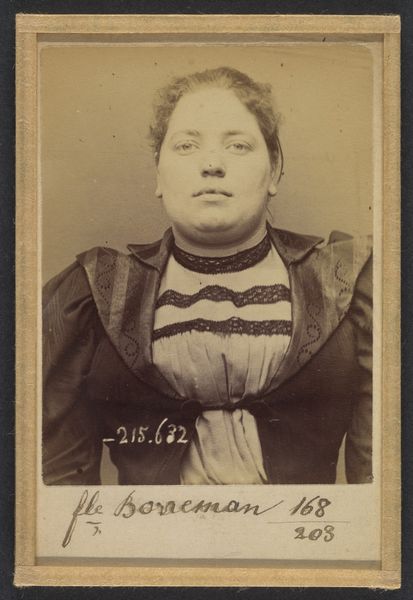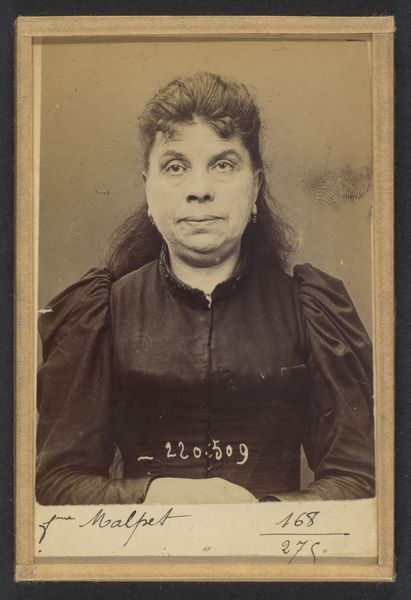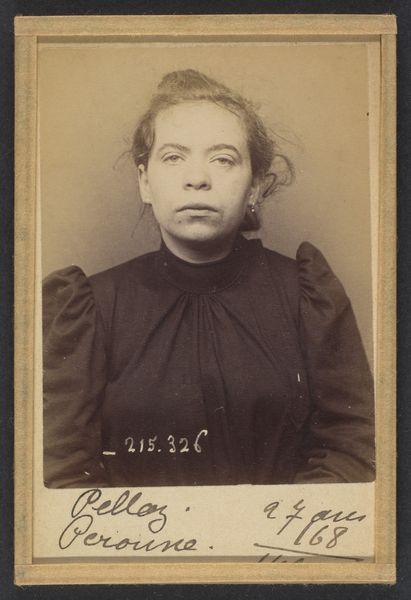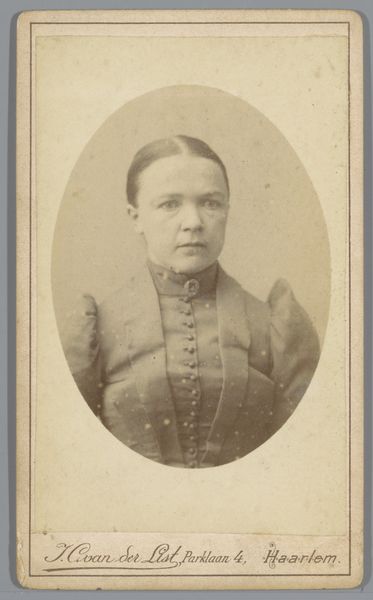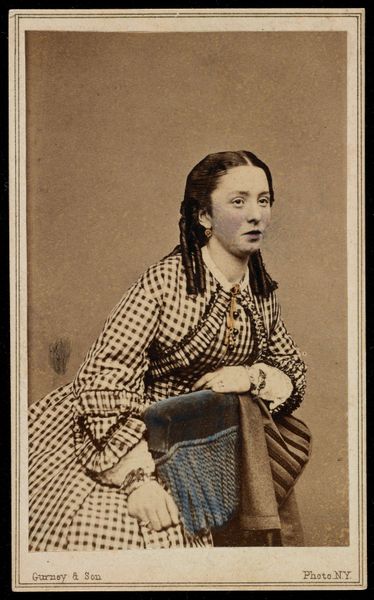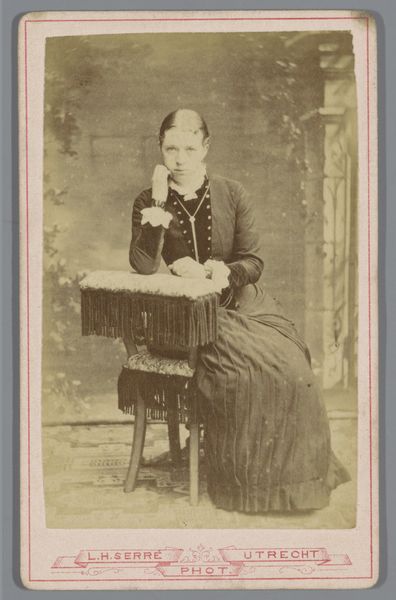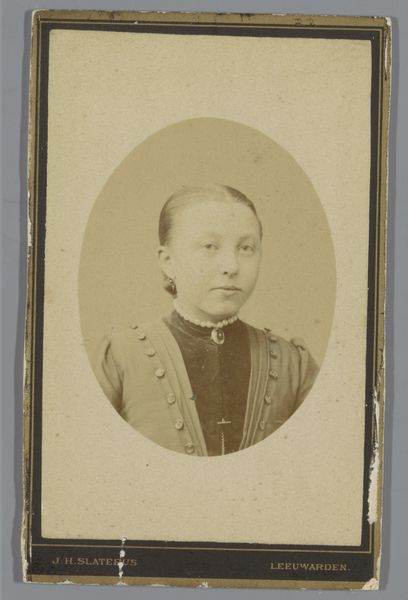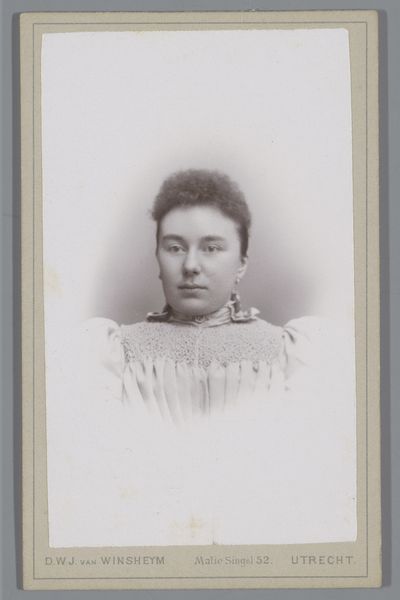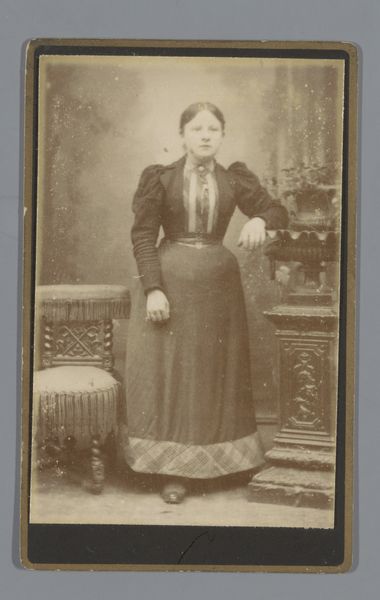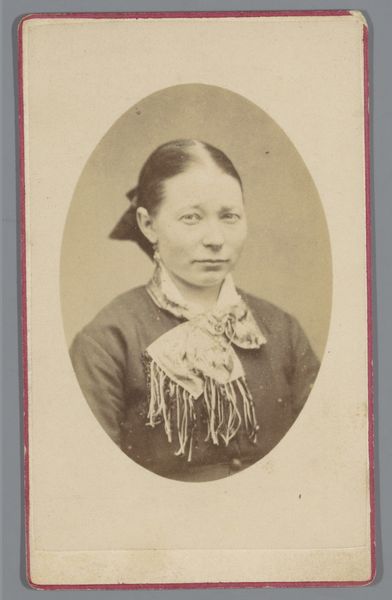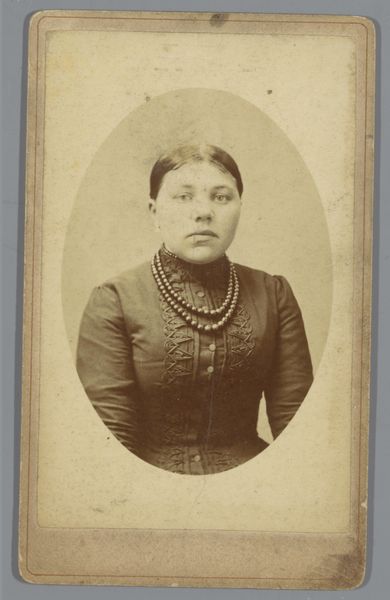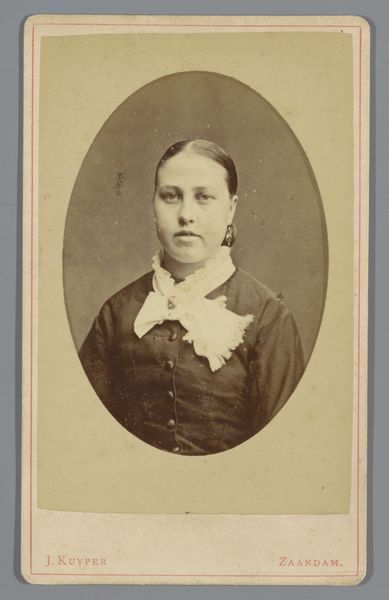
Bertout. Marie, Ismérie. 41 ans, née à Reims. Marchande de vins. Pas de motif. 26/2/94. 1894
0:00
0:00
photography, gelatin-silver-print
#
portrait
#
photography
#
gelatin-silver-print
#
realism
Dimensions: 10.5 x 7 x 0.5 cm (4 1/8 x 2 3/4 x 3/16 in.) each
Copyright: Public Domain
Editor: So, this gelatin silver print, titled "Bertout. Marie, Ismérie. 41 ans, née à Reims. Marchande de vins. Pas de motif. 26/2/94." was created by Alphonse Bertillon in 1894. It's a rather direct portrait... almost confrontational in its simplicity. What do you see in this piece? Curator: Beyond the photographic realism, I see a chilling reflection of power dynamics inherent in the late 19th century. Bertillon, a pioneer of criminal identification, used photography to classify and control. This is not simply a portrait; it's a document within a system of surveillance. Note the inscription – it details Marie's identity, occupation, and supposed lack of criminal "motif," immediately framing her within a network of suspicion. How does that context shift your perception? Editor: It makes me uneasy. Knowing it's part of a criminal record... it dehumanizes her, stripping her of agency. She becomes a specimen, not a person. Curator: Precisely. Consider the broader social implications. Who was being surveilled and why? This image exists at the intersection of gender, class, and societal anxieties. A woman working as a wine merchant – a space often dominated by men – might be seen as challenging the social order, making her a target for increased scrutiny. This photo becomes evidence of the patriarchal gaze and the criminalization of certain social groups. Editor: I didn't consider the gender implications initially, but that's a crucial point. The "lack of motif" ironically becomes the motif – the suspicion falls on someone simply for existing outside of perceived norms. Curator: Absolutely. And think about the lasting impact of these systems of identification and categorization, particularly on marginalized communities today. Understanding Bertillon's methods allows us to critically examine the biases embedded within contemporary systems of surveillance and data collection. Editor: That's a really powerful connection to today. It highlights how these seemingly objective methods are anything but neutral. I'll definitely view similar portraits differently now. Curator: That's the goal – to challenge the surface and dig into the complex layers of history, power, and representation embedded in art.
Comments
No comments
Be the first to comment and join the conversation on the ultimate creative platform.
